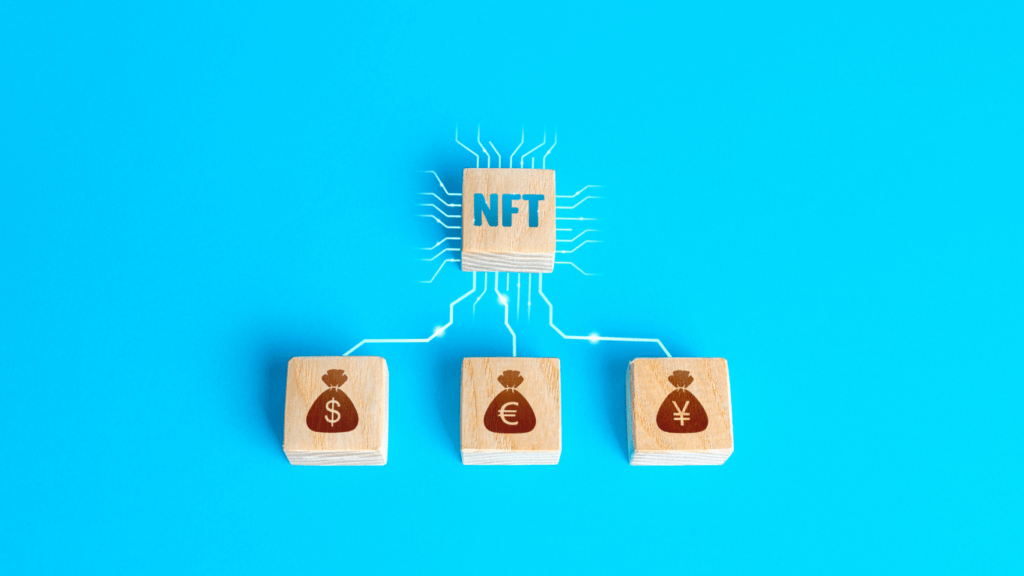What Are NFTs?
NFTs, or Non-Fungible Tokens, are unique digital assets stored on a blockchain. Unlike cryptocurrencies such as Bitcoin or Ethereum, NFTs can’t be exchanged on a one-to-one basis because each NFT has distinctive attributes. These tokens often represent digital art, music, virtual real estate, or collectibles.
NFTs use blockchain technology to verify ownership and ensure the scarcity of the digital item. Each NFT contains metadata and a unique identifier, making it distinct from any other token. This uniqueness and ownership verification are what drive their value in the digital marketplace.
In simpler terms, think of an NFT as a digital certificate of authenticity. While someone might own a JPEG image, owning the NFT linked to that image means they have the official proof of ownership. Artists and creators are increasingly using NFTs to monetize their work by selling these digital proofs.
Major platforms like Ethereum host most NFTs, though other blockchains such as Binance Smart Chain (BSC) and Flow are also in use. These platforms support the creation, buying, and selling of NFTs, facilitating a booming digital economy.
When considering the environmental impact, it’s crucial to understand the blockchain’s role. Each transaction, including creating and trading NFTs, requires a significant amount of computational power, leading to high energy consumption. Blockchain networks rely on methods like proof of work (PoW) to validate transactions, which intensifies energy use due to complex mathematical problems that need solving.
Overall, NFTs represent a revolutionary shift in how digital assets can be owned and traded, yet it’s essential to weigh these benefits against their environmental costs.
Energy Consumption of NFTs
NFTs rely on blockchain technology for validation, which consumes significant energy. Two key aspects contribute to this consumption: the blockchain technology itself and the nature of transactions.
Blockchain Technology and Proof of Work
Blockchain technology underpins NFTs by ensuring secure and transparent transactions. The proof of work (PoW) consensus mechanism, employed by most blockchains hosting NFTs, is energy-intensive.
PoW requires miners to solve complex mathematical problems, validating transactions and ensuring security. These computational tasks demand vast amounts of electricity, leading to high energy consumption.
For instance, Ethereum, the main platform for NFTs, has an estimated annual energy consumption comparable to some small countries. Each transaction, including minting and transferring NFTs, adds to this energy burden. The complexity of PoW, while critical for security, makes it less efficient and environmentally friendly.
Energy-Intensive Transactions
Transaction processes in NFT ecosystems involve energy-intensive steps. Minting an NFT, which is creating a new token, consumes considerable energy due to the computational power needed. This extends to trading and transferring NFTs, which also require validation through PoW. Each transaction on a blockchain like Ethereum involves multiple steps, each contributing to energy use.
For example, minting a single NFT can consume more energy than an average household’s daily use. Trading NFTs, which involves listing, bidding, and selling, further compounds the energy consumption. Although alternative blockchains with less energy-intensive mechanisms exist, Ethereum’s dominance means the environmental impact remains significant.
By understanding the nuances of blockchain technology and transaction processes, we can better grasp the energy footprint of NFTs. Efforts to mitigate this impact are crucial for sustainable digital asset management.
Carbon Footprint of NFTs

NFTs have gained traction, but their environmental impact warrants examination. Blockchain transactions for NFTs are energy-intensive, primarily due to the proof of work (PoW) mechanism.
Comparison with Other Industries
NFTs’ energy consumption can be compared to various industries to provide context. According to Digiconomist, a single Ethereum transaction, common in NFT platforms, consumes about 48.14 kWh, comparable to an average U.S. household’s daily electricity use.
In contrast, Google’s annual energy consumption in 2020 was 15.7 TWh, powering millions of searches. While NFT transactions individually consume less energy, their cumulative effect is substantial in the digital economy.
- Ethereum Transactions: Approx. 48.14 kWh per transaction
- U.S. Household: Approx. 29 kWh daily usage
- Google: 15.7 TWh annual consumption
Case Studies and Real-World Examples
Several case studies highlight the environmental impact of NFTs. In 2021, artist Beeple’s NFT “Everydays: The First 5000 Days” consumed over 78,597 kWh for minting and transactions, equivalent to the annual energy use of 13 U.S. households.
Another example is NBA Top Shot, where each collectible NFT transaction contributes to substantial cumulative energy consumption, given the platform’s popularity and volume of transactions.
- Beeple’s “Everydays”: 78,597 kWh for minting and transactions
- NBA Top Shot: Significant cumulative impact due to high transaction volumes
It’s essential to weigh the environmental costs against the benefits of NFTs, considering potential alternatives for reduced carbon footprints, such as proof of stake (PoS) mechanisms.
Mitigation Strategies
Mitigating the environmental impact of NFTs is essential for their sustainable use. Here are two primary strategies:
Transition to Proof of Stake
Blockchains like Ethereum are adopting Proof of Stake (PoS) to reduce energy consumption. Unlike Proof of Work (PoW), PoS doesn’t require intensive computational power. Validators are chosen based on the number of tokens they hold and their willingness to “stake” those tokens.
This drastically lowers the energy required to maintain the network. For example, Ethereum 2.0’s transition to PoS aims to reduce its energy consumption by over 99%, providing a more eco-friendly framework for NFTs.
Carbon Offsetting Initiatives
Many NFT platforms are incorporating carbon offsetting initiatives to neutralize their environmental impact. Projects like Offsetra and Nori facilitate carbon offsets by funding environmentally beneficial projects. NFT creators can also partner with these platforms to ensure their carbon emissions are offset.
For instance, some artists pledge to plant trees for every NFT sold, contributing to reforestation efforts. Such initiatives make NFT trading more sustainable by balancing out the carbon footprint generated through blockchain transactions.
Industry Responses and Innovations
The NFT industry is actively addressing the environmental issues related to blockchain energy consumption. Various responses and innovations are emerging to create a more sustainable future for NFTs.
Green NFT Marketplaces
Green NFT marketplaces prioritize eco-friendly practices. SuperRare and Hic et Nunc, for example, are leading platforms adopting technologies to minimize their carbon footprints.
They use blockchain networks that leverage Proof of Stake (PoS) mechanisms, substantially reducing energy consumption compared to Proof of Work (PoW) blockchains. These marketplaces also often incorporate carbon offset programs, ensuring that each transaction contributes to environmental conservation projects.
Technological Advances and Solutions
Innovations in blockchain technology are pivotal in mitigating environmental impacts. Layer 2 solutions, such as Polygon and Arbitrum, enhance efficiency by handling transactions off the main blockchain, reducing the energy required for each transaction.
Moreover, the development of sharding—a method to partition a blockchain network into smaller, more manageable pieces—further improves scalability and reduces energy use. Blockchain projects like Ethereum 2.0 exemplify these advancements, aiming to make the digital economy more sustainable while supporting the growth of NFTs.













































































 Chief Content Strategist & Unique Author
Paulo Okellyansy is the Chief Content Strategist responsible for curating and managing the platform’s editorial direction. With an in-depth knowledge of cryptocurrency markets and digital finance, Paulo crafts engaging, informative content that resonates with both newcomers and seasoned crypto enthusiasts. His ability to simplify complex topics and identify emerging trends has helped position the website as a go-to resource for cryptocurrency insights.
Chief Content Strategist & Unique Author
Paulo Okellyansy is the Chief Content Strategist responsible for curating and managing the platform’s editorial direction. With an in-depth knowledge of cryptocurrency markets and digital finance, Paulo crafts engaging, informative content that resonates with both newcomers and seasoned crypto enthusiasts. His ability to simplify complex topics and identify emerging trends has helped position the website as a go-to resource for cryptocurrency insights.
